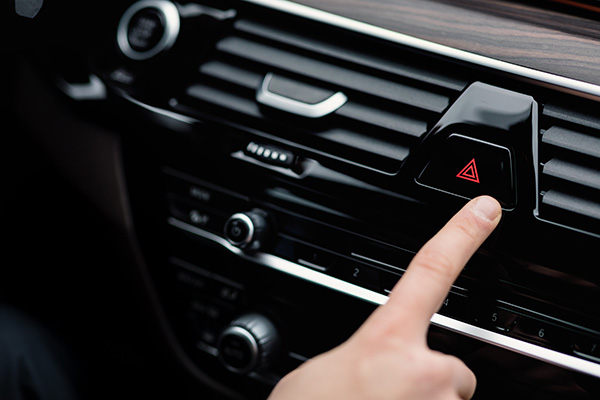
Hazard lights, also known as flashers, are a valuable safety feature in vehicles, designed to alert other drivers to potential dangers. While they serve a crucial purpose, it's essential to use them judiciously to enhance safety rather than create confusion on the road.
When to Activate Hazard Lights
- Emergency Stops or Breakdowns: Hazard lights are most commonly used when your vehicle experiences a sudden breakdown or comes to an unexpected stop. Engaging your hazards in such situations helps alert other drivers to the potential obstruction, reducing the risk of collisions.
- Low Visibility Conditions: During heavy rain, dense fog, or other low-visibility conditions, turning on your hazard lights can enhance your vehicle's visibility to other drivers. This is especially crucial when driving significantly below the speed limit due to adverse weather.
- Traffic Slowdowns: If you find yourself in a situation where traffic is moving at a significantly slower pace than the normal flow, using hazard lights can help notify drivers behind you of the reduced speed and prevent rear-end collisions.
- Funeral Processions: In some regions, it is customary to use hazard lights during funeral processions to signify a solemn and slow-moving event. Check local regulations to ensure compliance.
When Not to Use Hazard Lights
- Normal Driving Conditions: Hazard lights should not be used during regular driving, even in adverse weather conditions. They can create confusion and make it difficult for other drivers to anticipate your movements.
- Parking: Activating hazard lights while parked is generally unnecessary and can be misleading. Use parking lights if needed, but avoid engaging hazard lights unless you are actively moving.
- Moving Quickly in Inclement Weather: Hazard lights should not be used when driving at normal speeds in rain, snow, or other adverse conditions. They are meant for low-speed or stationary situations where extra caution is required.
- Turning Signals: Hazard lights should not be used as a substitute for turning signals. Always use your turn signals to indicate your intention to change lanes or make a turn.
Understanding when to use hazard lights and when to avoid them contributes to safer road conditions for everyone. When faced with challenging situations, activating your hazards can be a simple yet effective way to communicate potential hazards to other drivers. However, using them appropriately ensures that this safety feature serves its intended purpose without causing confusion or misunderstanding.
If your hazard lights or any other lights on your vehicle require repairs, consider bringing it to the team at Folsom Automotive Service LLC. Our automotive technicians will perform inspections and diagnostics to pinpoint the problem and recommend the necessary repairs.